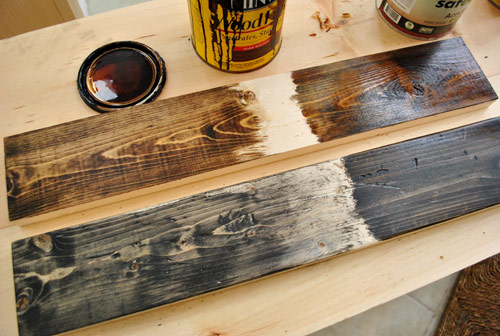Barn Wood Color Stain is a popular choice for adding a rustic, aged look to your furniture, walls, and other wooden surfaces. Staining barn wood can be a bit tricky though, as the natural tannins present in the wood can cause the color to bleed and create uneven results. But with a few easy steps and the right technique, you can create a beautiful, aged finish that will stand the test of time.
Preparing the Wood
The first step in staining barn wood is to prepare the wood. This involves sanding the wood with a medium-grit sandpaper to remove any dirt, grime, and splinters. Once the wood is smooth and even, you can use a wood conditioner or pre-stain to help the wood absorb the stain evenly. Let the wood conditioner or pre-stain dry completely before proceeding.
Choosing the Right Stain
Once the wood is prepped and ready, it's time to choose the right stain. There are a few factors to consider when choosing a stain for barn wood. First, consider the color you want to achieve. Barn wood has a natural, weathered look that is usually grayish-brown in color. You can choose a stain that is a few shades darker or lighter for a more subtle look, or choose a stain with a hint of red or yellow for a warmer tone.
It's also important to consider the type of finish you want. A penetrating stain, such as a water-based stain, will soak into the wood and is ideal for achieving a deep, natural color. On the other hand, a surface-level stain, such as an oil-based stain, will provide a more subtle, even color that won't penetrate as deeply.
Applying The Stain
Once you've chosen the right stain, it's time to apply it. Start by stirring the stain to ensure it is fully mixed. Then, apply it to the wood using a lint-free cloth or a brush. Work in small sections and apply the stain in the same direction as the grain of the wood. This will help to ensure an even finish.
Let the stain sit for a few minutes before wiping off any excess with a clean, lint-free cloth. Continue working in small sections until all of the wood is stained. Allow the wood to dry completely before proceeding.
Sealing The Stain
Once the stain has dried completely, it's time to seal it. Sealing the stain will help to protect it and make it more durable. There are a few different types of sealers you can use, including polyurethane, shellac, and varnish. Each type of sealer has its own benefits, so make sure to choose one that is suitable for the type of finish you want to achieve. Apply the sealer in thin layers and allow it to dry completely between coats.
Finishing Touches
Once the sealer has dried, you can give the wood a final sanding with a fine-grit sandpaper. This will help to ensure an even, smooth finish. You can also choose to apply a wax or oil finish for extra protection and shine. Finally, use a lint-free cloth to wipe away any dust or debris before using or displaying your newly stained barn wood.
Staining barn wood can be a bit tricky, but with the right technique and materials, you can create a beautiful, aged finish that will last for years to come. With a few simple steps and the right product, you can transform any piece of wood into a stunning showpiece.
Images Related to Barn Wood Color Stain:
How To Make New Wood Look Old & Rustic | Young House Love

Barnwood Stain and Barnwood Paint Colors
Featured Products | Staining wood, Grey stained wood, Grey stain
